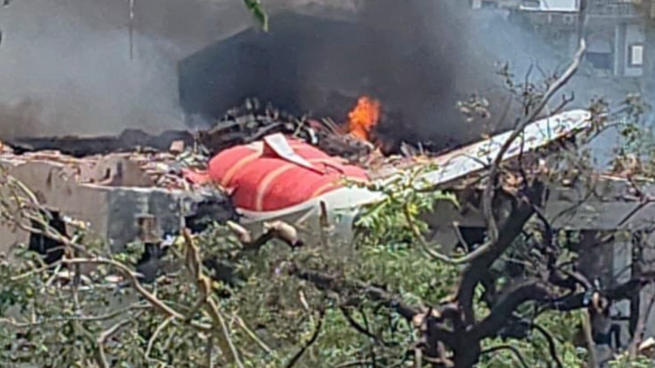Footage of Air India Flight AI171’s final moments appears to show a highly irregular configuration during its climb-out from Ahmedabad: landing gear extended, while the flaps were already retracted. According to aviation attorney Jim Brauchle of US-based law firm Motley Rice, such a setup is “highly unusual,” and will likely form a key part of the investigation.
“Upon takeoff, the gear is retracted first followed by the flaps,” Brauchle told The Sunday Guardian. “This configuration could be an error by the crew, a mechanical failure, or a bad indicator. Investigators will have to examine all the evidence and try to determine why the aircraft was in this configuration during the flight,” he said.
While the crash of AI171 is the first fatal accident involving the Boeing 787 Dreamliner, it comes after a series of safety incidents involving the aircraft type, including the uncommanded descent of United Airlines Flight 613 in January 2025. When asked whether a broader pattern might be emerging, Brauchle pointed to Boeing’s ongoing challenges.
“Boeing has faced past criticism regarding design, manufacturing, and oversight. As such, and in light of this tragedy, all of those areas need further investigation and evaluation,” Brauchle added.
If it is determined that AI171 suffered a mechanical or design failure, regulators such as the Federal Aviation Administration (FAA) and India’s Directorate General of Civil Aviation (DGCA) must initiate detailed audits into how the failure occurred and what corrective actions are necessary.
“If it is determined that this was a mechanical or design failure with the aircraft, the respective aviation regulatory agencies will need to do very detailed audits and investigations into how the failure occurred and how to prevent it going forward,” he said. “The regulatory agencies will also have to decide how the current fleet is affected and how to correct it before there are any more tragedies.”
With recovery operations ongoing, Brauchle emphasized the importance of securing key data from the crash.
“The priority in the initial days after an accident is to gather as much of the physical evidence and preserve it,” he said. “The most critical will be the recovery of the FDR/CVR data as this information will provide a detailed recreation of what was occurring with the performance of the aircraft and the aircrew.”
In the longer term, he argues, Boeing must take meaningful action to regain trust across technical, legal, and public domains.
“Boeing needs to be proactive and not just with their statements,” Brauchle said.
“They have to show their actions. To gain trust, they have to be transparent and show exactly what they are doing, how they did it, and what they found”, he added.
This comes against the backdrop of multiple whistleblower allegations against Boeing’s Dreamliner program, particularly concerning its production speed and safety prioritization. While Brauchle declined to speculate on causality in this case, he acknowledged the seriousness of the accusations.
“Since this tragedy is still very fresh it is too soon to determine the cause of the crash and whether it was a mechanical issue with the aircraft,” he said. “If it is determined that a mechanical failure occurred, then certainly Boeing’s production would need to be highly scrutinized, especially in light of the previous whistleblowers that have accused Boeing of safety lapses during production.”








